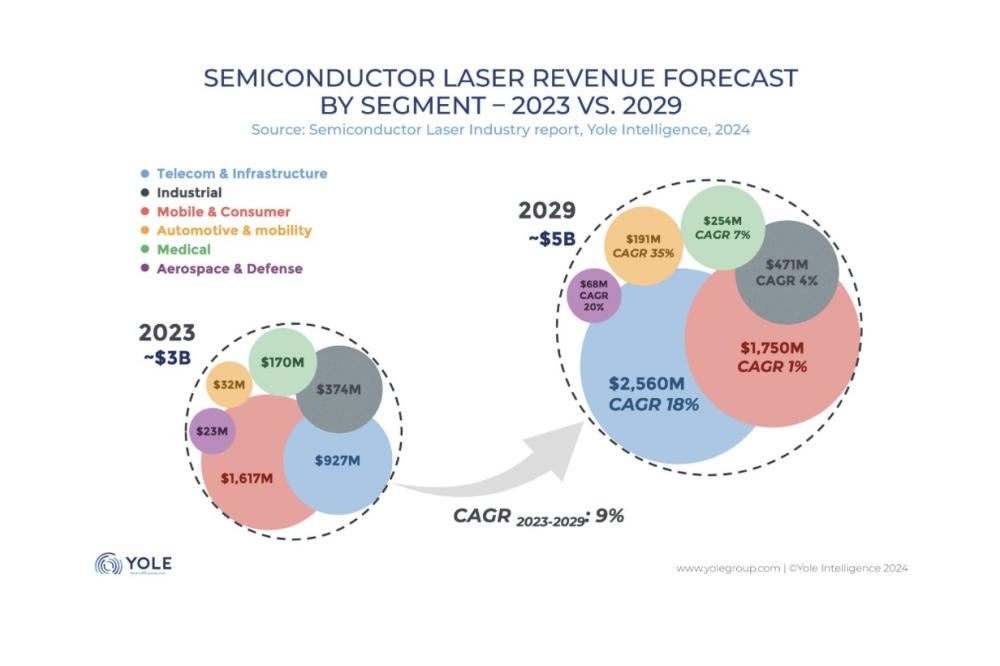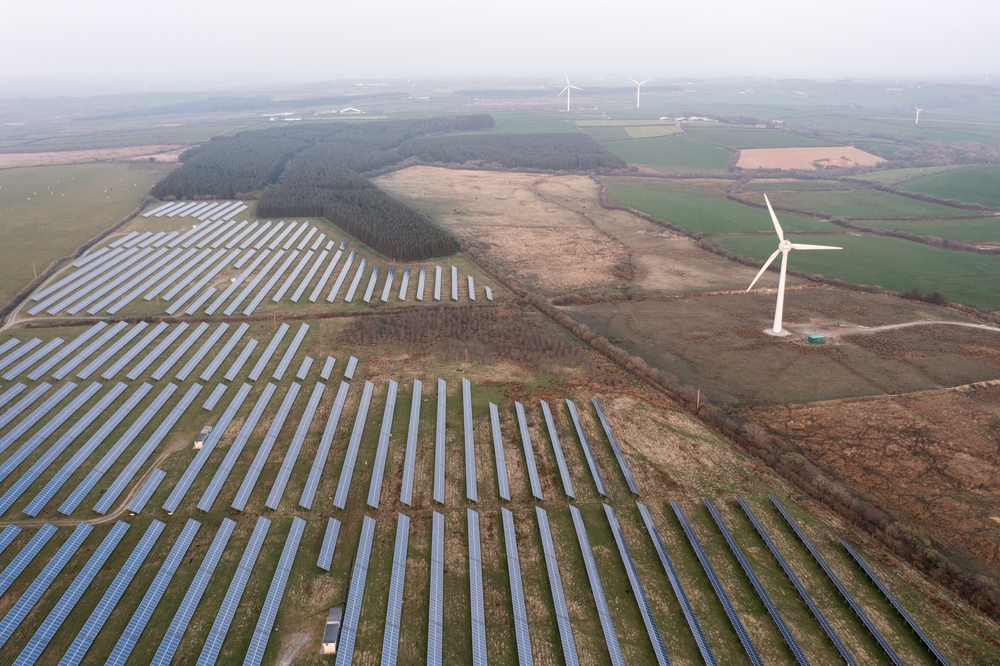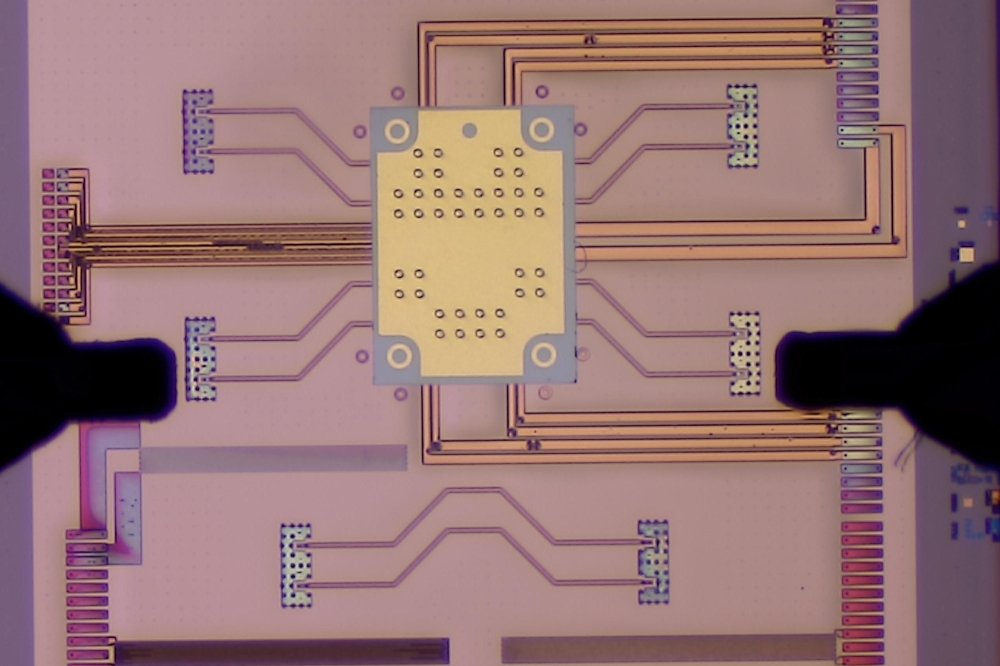Buried micro-reflectors boost performance of AlGaInP LEDs
Using high-quality AlGaInP material, a very high photon density can be created by spontaneous emission inside an LED at moderate current densities (typically 40 A/cm2). However, because of the large difference in refractive index between the semiconductor and the surrounding encapsulant (n ≅3.5 and ≅1.5 respectively), the extraction efficiency of conventional LEDs is limited to about 4% for each available extraction surface. Therefore improving light extraction is a major issue in fabricating high-efficiency LEDs, particularly for the AlGaInP/GaAs material system. Here the growth occurs on an absorbing substrate, which considerably limits device performance (figure 1). Several approaches have been developed to circumvent this constraint. The use of a distributed Bragg reflector (DBR), or replacing the GaAs substrate with transparent GaP after growth using wafer-bonding techniques, are well established in high-volume manufacturing. Implementing a thick GaP window layer and additional geometrical shaping, e.g. truncated-inverted-pyramid geometry, has pushed efficiency above 50% (Holcomb et al.).
Substrate-less LEDs Instead of replacing the absorbing GaAs substrate, using substrate-less devices has proven to be another interesting approach (figure 2). Placing the epitaxially grown semiconductor layers, including the active region, on a highly reflective mirror considerably eases some of the challenges of wafer bonding. Because the bonding interface need not be optically transparent, a metal-metal interface can be used. Thus in contrast with wafer bonding, neither ultra-smooth surfaces nor precise matching of crystallographic alignment are necessary.
As indicated in figure 2, the full advantage of the thin-film concept can be exploited by incorporating a surface that randomizes or changes the angle of reflection of light otherwise captured within the semiconductor. Using diffuse reflection by surface-texturing or radial out-coupling tapers, efficiencies as high as 46% have been demonstrated in the infrared spectral region (Schmid et al., Windisch et al.). However, substrate-less devices have so far only been demonstrated on a laboratory scale. In order to establish a process sequence suitable for high-volume manufacturing, a number of issues had to be addressed during development.
Most importantly, to be compatible with standard fabrication techniques, epitaxial layers cannot be handled as a fragile thin film. The process sequence for this is shown schematically in figure 3: the mirror layers are deposited on the epiwafer, whereas the carrier is coated with suitable solder layers. An n-doped 4 inch GaAs substrate wafer is used as a carrier, and is covered with an AuGe ohmic contact layer and a gold-tin solder layer with appropriate diffusion barriers. Only a short, low-temperature step is required for the metal-metal bonding - this is essential to avoid redistributing doping profiles within the LED structure. After bonding, the substrate of the epiwafer is removed by grinding and wet chemical etching, resulting in an "artificial" 4 inch wafer with epilayers on a new carrier with buried metal-mirror layers in between. The solder joint has proven stable enough to endure typical LED fabrication steps like high-pressure cleaning, sawing, laminating, wire bonding and thermal cycling.
Micro-reflector structures In order to make thin-film LEDs more efficient, it is necessary to incorporate a surface that scatters light rays into new propagation angles, giving them a chance to lie within the extraction cone. However, realizing a diffuse reflecting surface using random surface texturing in the sub-micrometer range is not a standard production technique, and may be difficult to implement for large wafers. Therefore we have chosen a surface topography that is fully compatible with standard LED technology. Before depositing the mirror and bonding the wafer to the carrier, inclined micro-reflectors forming geometrical bodies like frustums or pyramids are defined in the upper part of the epitaxial layer sequence. The dimensions of the micro-reflectors are designed to allow simple manufacturing using conventional lithography and wet or dry-etching techniques, and to provide compatibility with the thin-film concept.
Figure 4 is a schematic cross-section of two designs, both containing an ensemble of buried micro-reflectors optically connected via the transparent semiconductor thin-film layer. Light emitted from the active layer with angles greater than the critical angle of total internal reflection has to travel only short distances within the semiconductor and needs only a few reflections to escape from the device. This significantly reduces the susceptibility to residual absorption (e.g. in the active layer) and non-perfect mirrors.
In addition because the reflectors redirect the light mainly to the top surface of the chip, light emission through the chip sides plays only a minor role. Consequently thick window layers to improve light extraction through the side faces of the LED are not required. In contrast with other approaches the micro-reflectors do not have to be scaled with chip area, allowing the use of thin epitaxial structures for realizing large-area LEDs. This saves growth time in the MOCVD reactor, enabling low-cost, high-power LEDs to be produced.
The reflectivity of the mirror is enhanced to values greater than 90% using a dielectric layer beneath the mirror metal. For current injection small contact areas are defined on top of each micro-reflector. Because these contacts are interconnected electrically by the mirror metal there is no shadowing of emission area. As an additional benefit, this leads to higher local current densities and therefore to greater photon generation in areas where the extraction efficiency is geometrically enhanced by the micro-reflectors. On the top side of the device, carriers are supplied from a common bond-pad to all micro-reflectors via the transparent semiconductor thin film, which acts as a current-spreading layer.































